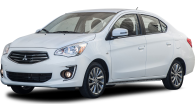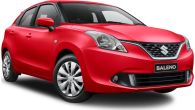The hybrid owner makes a statement but pays a premium price.
Our Federal and State governments, unlike those in Japan, the US and Europe, provide no incentives apart from a token concession on the luxury car tax to entice buyers into clean, green machines.
Britain's car tax is based on carbon dioxide emissions. If we had the same regimen, you'd cough up about $2000 upfront on a Commodore V8, which produces 300g/km, then $1000 every year. Ouch.
A Corolla (143g/km) would cost about $200 a year. On a Prius, which averages 80g/km, you would pay nothing.
The fourth-generation 2016 Prius is the best yet but the drivetrain is no longer pointy-end hybrid engineering.
In the absence of financial incentives to take one for the planet, plus a pretty stiff $34,990 starting price, what's the attraction?
Design
Super-slippery aerodynamics (the drag coefficient is 0.24) maximise fuel efficiency.
As to whether it's a good-looking thing or drop dead ugly, that's a matter of taste. Front and rear ends resemble radical automotive origami — sharp edges, fins and triangulated corners cleave the air cleanly, creating less turbulence and drag than sweeping curves.
The base Prius is $34,990. It's an $8000 hike to the $42,990 i-Tech, a bit rich for the addition of blind spot monitoring, rear cross traffic alert, 17-inch alloys, leather seat facings and digital radio, which as in other Toyota and Lexus models only picks up a few of the available stations, at least in Sydney.
You also get an extra 45L of luggage space (502L) because there's no spare, just a repair kit. The base model has 15-inch wheels, which allows a space-saver to fit under the boot floor.
About town
The Prius's self-charging hybrid setup combines a 1.8-litre petrol engine, twin electric motor-generators, nickel metal hydride battery and constantly variable transmission to deliver smooth, seamless performance.
This comes with a satisfying surge of electric motor torque — relatively mild in Eco mode, amplified to serious grunt in Power mode.
Automatic stop-start, regenerative braking and the ability to travel a kilometre or so on battery power alone at up to about 35km/h means that you can beat Toyota's claimed 3.4L/100km if you use Eco mode and play "let's drive green" to the max in heavy traffic. Eco-score readouts on a dash-top screen spur you on.
Drive the Prius as you would any other car and you'll do mid 4.0L in town — less than half the urban consumption of most 2.0-litre four-cylinder engines.
Unfortunately, Toyota Australia has no plans to import the new Prius Prime plug-in hybrid, which can travel up to 35km on battery power alone.
Drive the Prius as you would any other car and you'll do mid 4.0L in town
The driver's seat is comfortable, though short in the cushion for long legs.
Touchscreen infotainment includes navigation, easy Bluetooth pairing and voice control that works.
Its foot-operated parking brake is an annoying, clumsy piece of ancient engineering.
The raked, panoramic windscreen and large glass area afford clear vision and a pleasant sense of space and light. It's the same in the comfortable, roomy, high-set rear seat.
On the road
Toyota is spruiking this Prius as the most dynamically capable to date. That's true but it's still no sports car.
Its steering has greater precision and feel, the brakes no longer give the impression that the discs are made of concrete, the ride is luxurious and wind noise almost non-existent. At highway speeds the 1.8 drones quietly in the background.
Toyota is spruiking this Prius as the most dynamically capable to date.
Hybrid torque is similar in character to turbo diesel — just squeeze the accelerator and the force will be with you shortly.
Over 1200km I averaged high 4.0L on the highway — slightly thirstier than in town, which is normal for a hybrid. A 1.6 to 2.0-litre turbo diesel gets similar highway economy. Even the Golf. Honest.
Toyota Prius 2016: i-Tech Hybrid
| Engine Type | Inline 4, 1.8L |
|---|---|
| Fuel Type | Premium Unleaded/Electric |
| Fuel Efficiency | 3.9L/100km (combined) |
| Seating | 5 |
| Price From | $14,850 - $19,470 |
| Safety Rating |
|
Verdict
Unless you're an eco-warrior out to make a statement, the premium prices make little sense — and even if you are, you're still buying B-grade eco-tech. What you really want is the plug-in Prius, which Toyota Australia didn't have in 2012-15 but surely must this time around.
A Golf, Mazda3 or Ford Focus costs $10,000 less than the base Prius. They're hardly big drinkers and are also better drives and smarter buying.
What it's got
Seven airbags, stability control, rear camera with moving guidelines, pre-collision warning and braking, radar cruise, lane departure warning, automatic high beams, head-up display, 15-inch alloys, auto levelling bi-LED headlights, Toyota Link (via your smartphone), Bluetooth, voice control, navigation, wireless phone charging (for Qi supported devices), keyless entry and starting.
What it hasn't
Blind spot monitor and rear cross traffic alert only on i-Tech. No Apple CarPlay or Android Auto connectivity. No spare in i-Tech. Lithium-ion battery that's on overseas models.
Ownership
It's bulletproof. That's why you now see so many working as taxis. Service intervals are short at 6 months/10,000km but capped at $140 a time for the first six services.
Do you think it's worth paying a premium for the Prius i-Tech? Or would you prefer a cheaper but fuel-efficient fossil fuel burner?
Click here to see more 2016 Toyota Prius pricing and spec info.
Range and Specs
| Vehicle | Specs | Price* |
|---|---|---|
| Hybrid | 1.8L, Premium Unleaded/Electric, SPEED CONTINUOUS VARIABLE | $12,100 - $16,170 |
| i-Tech Hybrid | 1.8L, Premium Unleaded/Electric, SPEED CONTINUOUS VARIABLE | $14,850 - $19,470 |






_0.jpg)
_0.jpg)
_0.jpg)
_0.jpg)
_0.jpg)
_0.jpg)
_0.jpg)
_0.jpg)
_0.jpg)
_0.jpg)
_0.jpg)
_0.jpg)
.jpg)
.jpg)
.jpg)









































